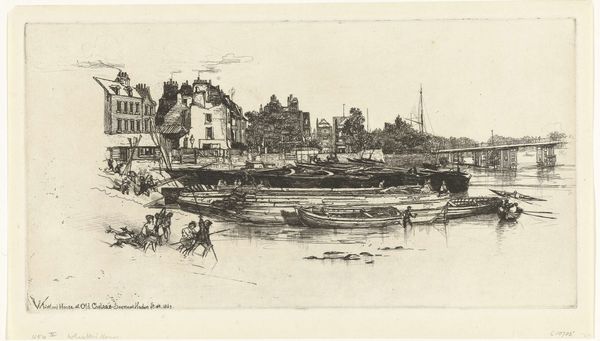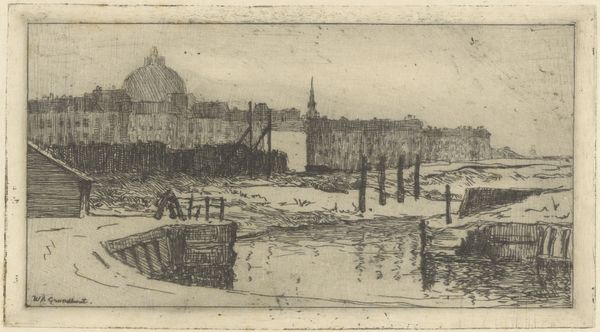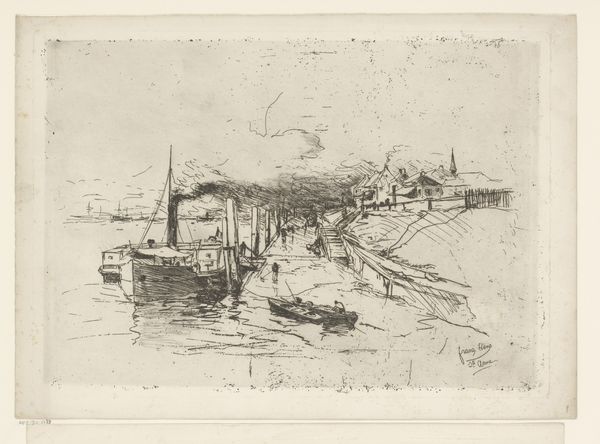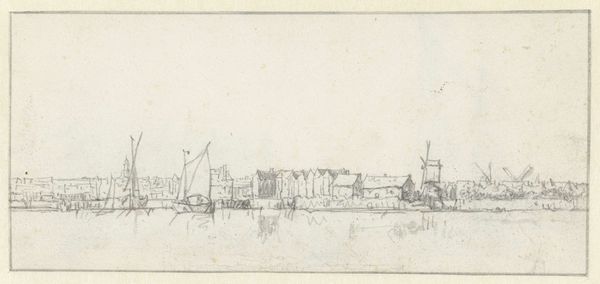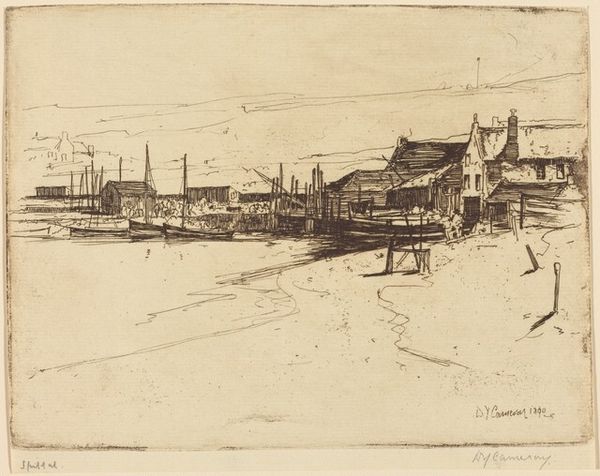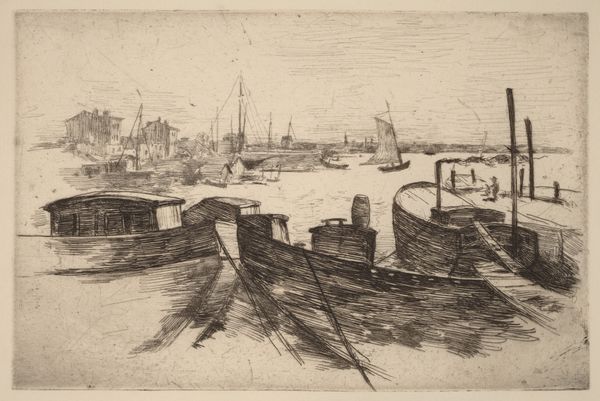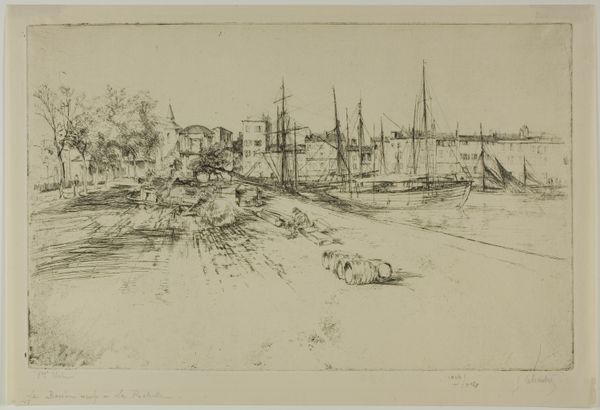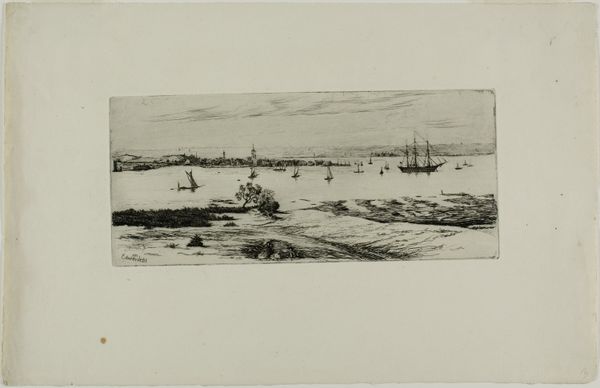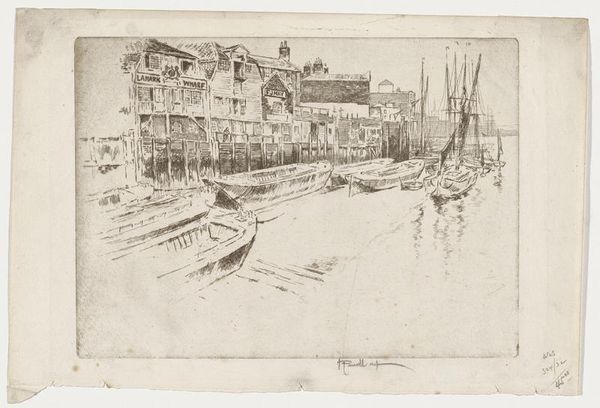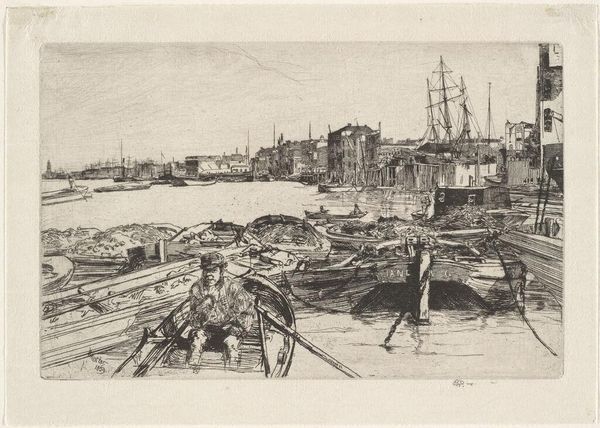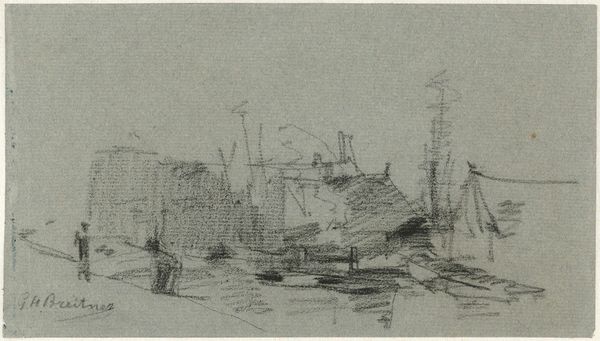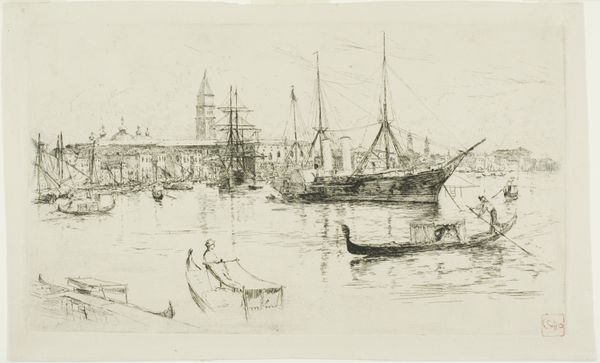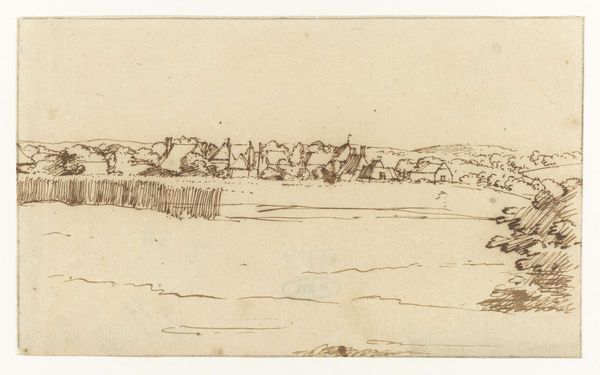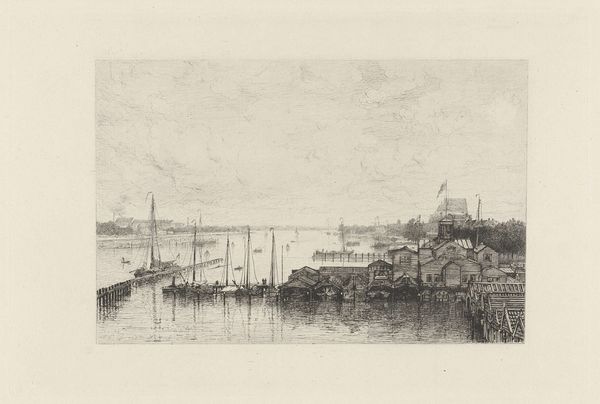
print, etching
#
dutch-golden-age
# print
#
etching
#
landscape
#
etching
#
cityscape
Dimensions: height 45 mm, width 193 mm
Copyright: Rijks Museum: Open Domain
Curator: It’s interesting to see this print of Willem Adrianus Grondhout’s "Kostverlorenvaart, Amsterdam", likely created between 1888 and 1931 using etching. It has a very calm feeling, but almost seems unfinished or like it was captured very quickly. How would you interpret a piece like this? Editor: That's a good point about the calmness, but it almost feels like a deceptive calmness. The etching seems to be evoking the everyday life of the working class around Amsterdam in the early 20th century, but what’s really striking to me is the visible labor involved in creating the etching itself. The lines seem hurried, a bit messy… Was that common for the time, or is it saying something deeper about labor and representation? Curator: Absolutely! Your observations hit upon key elements. Grondhout, working in this period, wasn’t just depicting a scene; he was participating in a dialogue about the rapidly changing urban landscape and the place of labor within it. Look at the prominence of the canal and working boats versus the hint of a windmill on the horizon; can you imagine this suggesting the shift from agrarian to industrial economies, and how that impacts community? Editor: I see that, the visual weight is definitely on the water and the boats which probably served some industry at the time. It seems to draw a parallel between the artist's physical effort and that of the working people depicted. Does that make the print inherently political? Curator: Political maybe isn’t the right word, it depends on what political means to you. But the art invites us to question whose stories are being told and how. Etchings like this one can become potent tools for reclaiming narratives and decentering dominant perspectives. How can art become a form of resistance, challenging power structures? Editor: That’s such a cool interpretation, it shows that art isn’t just pretty aesthetics but it can carry a historical, societal weight to it. This discussion reframed how I view art, linking it to social narratives of labor and societal change, which gives a totally different appreciation of what art means. Curator: Exactly! And remember, art's power resides not just in its creation but in our continued questioning and reinterpretation.
Comments
No comments
Be the first to comment and join the conversation on the ultimate creative platform.
